WHALE WATCHING GUIDE – PART 2 OF 3
How to prepare for your whale watching tour from Húsavík
All you wanted to know about best practices onboard, where to meet, what to bring and how to spot whales.
All you wanted to know about best practices onboard, where to meet, what to bring and how to spot whales.
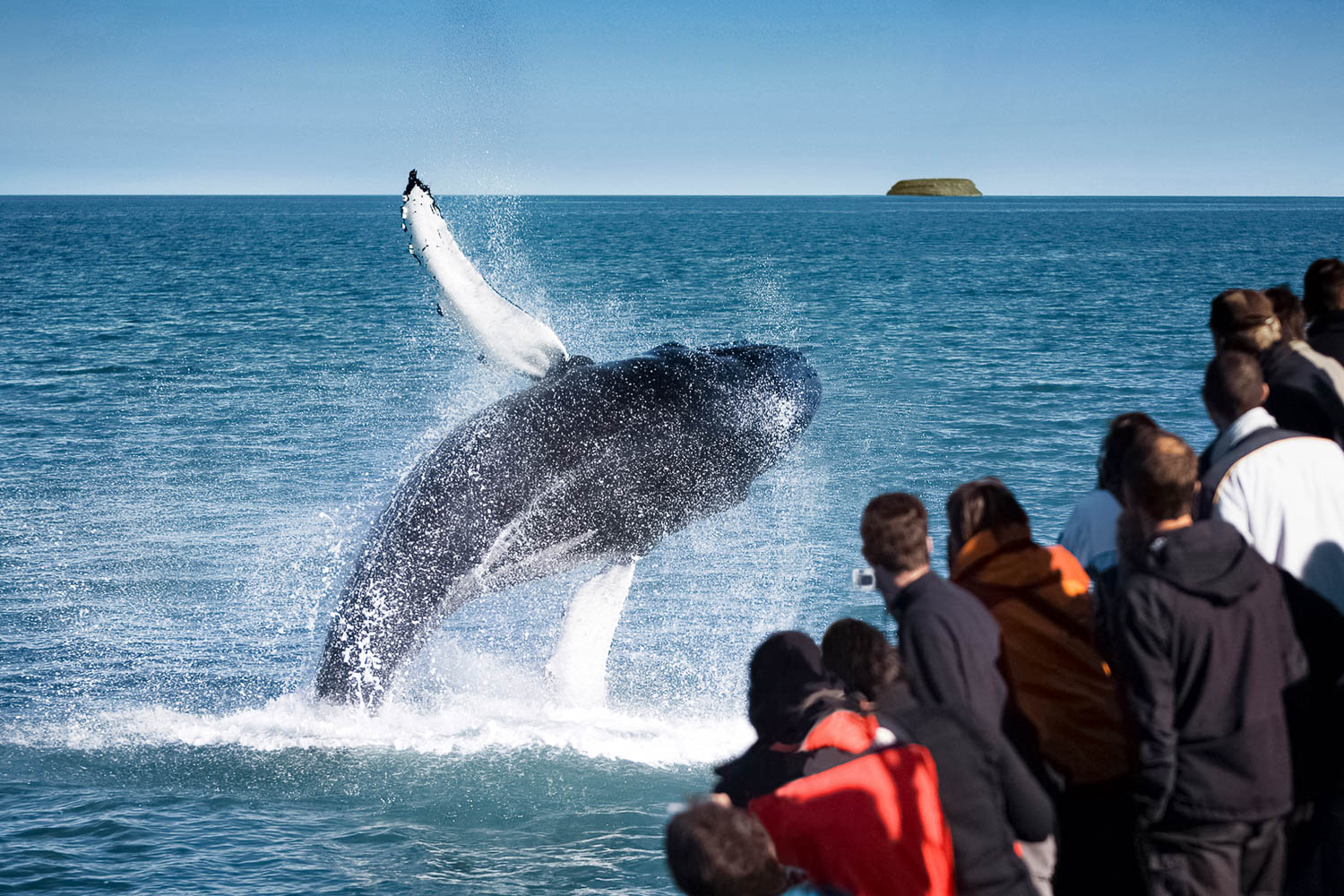
The picturesque village of Húsavík is known for its stunning scenery, remarkable harbour, colourful houses, and fantastic whale watching tours! There are many reasons to make the journey this far north. Preparation is the key to making the most of your vacation. Read on for good tips on how to prepare for a great tour with the whales!
Once in Húsavík, it’s good to stop at the North Sailing ticket office to get the latest updates on the weather, sightings and, most importantly, collect your boarding card for the whale watching tour. You’ll easily find the North Sailing ticket office located just across the street from the wooden church with a stunning view over Húsavík harbour and the Kinnarfjöll mountains in the background. Just look for the green flags, and you won’t miss us.
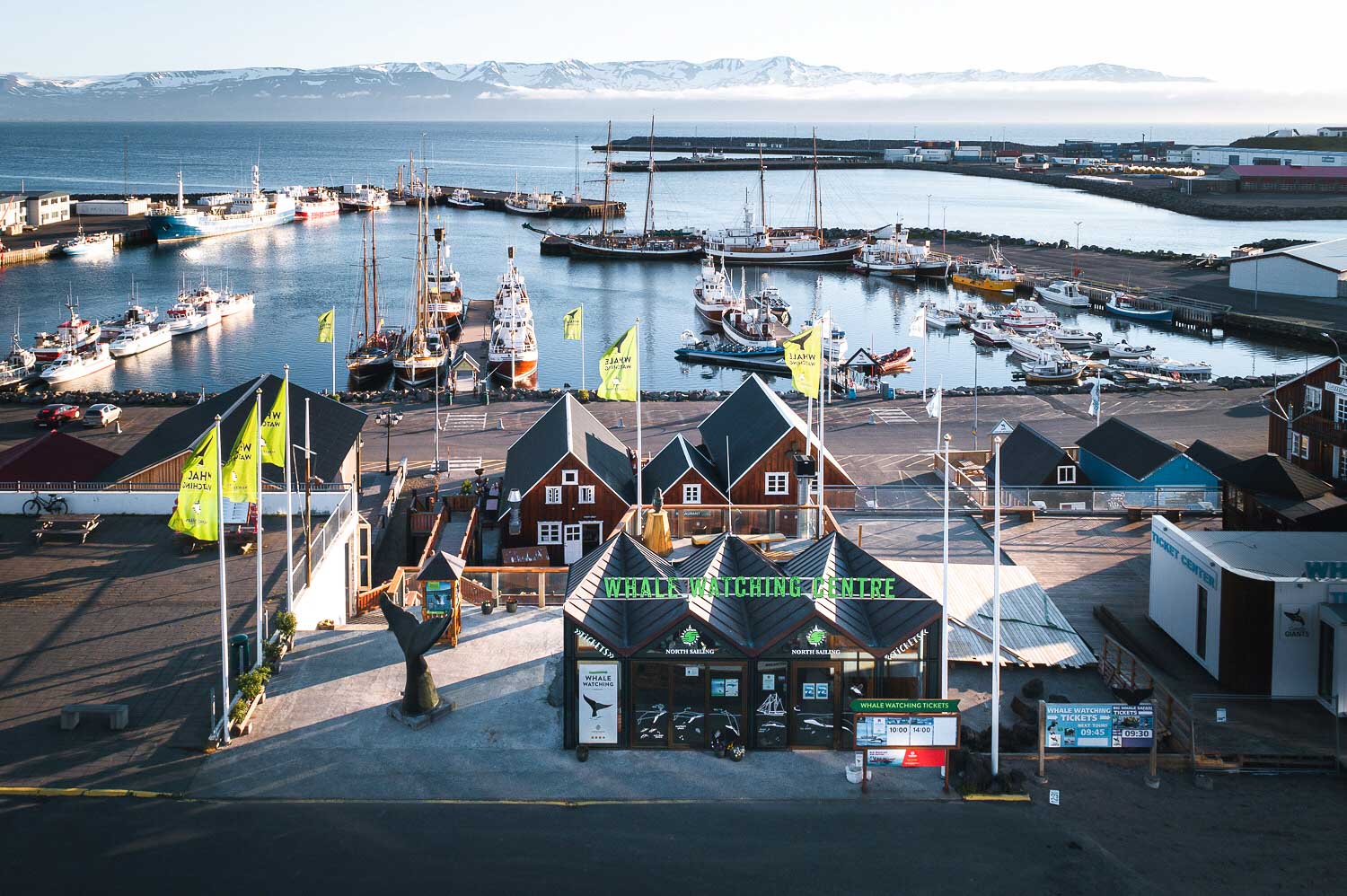
Even though it’s a beautiful day and the sun is blazing hot, sailing in the Skjálfandi bay is always a refreshing experience. We are just a few miles from the Arctic Circle!
Clothing layers are the key! A rule of thumb is to dress according to the weather before leaving the harbour. We recommend bringing a good outdoor jacket and pants, warm layers underneath and hats and gloves. It’s a good idea to take a little backpack for extra stuff and to put things away. Whether it is summer or winter, we recommend wearing good sturdy shoes. It’s always colder at sea then on land.
Additionally, we’ll always make sure you stay warm and cosy by offering you thick overalls and raincoats if necessary.
What to wear:
When the weather is fabulous in Húsavík put on sunscreen before heading out and don’t forget your sunglasses too! Especially on a hot summer day, bring a reusable bottle of water. (Please don’t waste your money on bottled water with a side-effect of a lot of plastic waste. The tap water in Iceland is perfectly safe to drink).
List of things to bring:
We are all excited to capture a photo of a humpback whale rising tail high above the water with perfectly shaped Kinnarfjöll mountains in the background.
Taking photos of wildlife is a really exciting and at the same time a very challenging discipline of photography! So it’s good to be prepared – bring a camera with fully charged batteries, an empty memory card and be patient. Good luck! Nowadays, mobile phones also do a great job. Try to capture the experience on your phone, which is the perfect video tool for sharing on social media.
Don’t forget to put your phone and cameras away for a while, immerse yourself in a moment, and memorize perfect wildlife encounters.

Our professional and always positive crew on board will guide you throughout the tour, share knowledge about whales and fascinating stories from Skjálfandi Bay. If you need anything during the tour or have any questions, feel free to reach out to our crew, they are always happy to assist.
Have you heard of our freshly baked cinnamon buns and original recipe of hot chocolate served on the way back to Húsavík? That’s something to look forward to at the end of each trip. If you join us for a whale and sails tour, you can expect a ‘warmer’ addition to your drink, courtesy of the captain.
Also, you will find toilets onboard all our vessels.
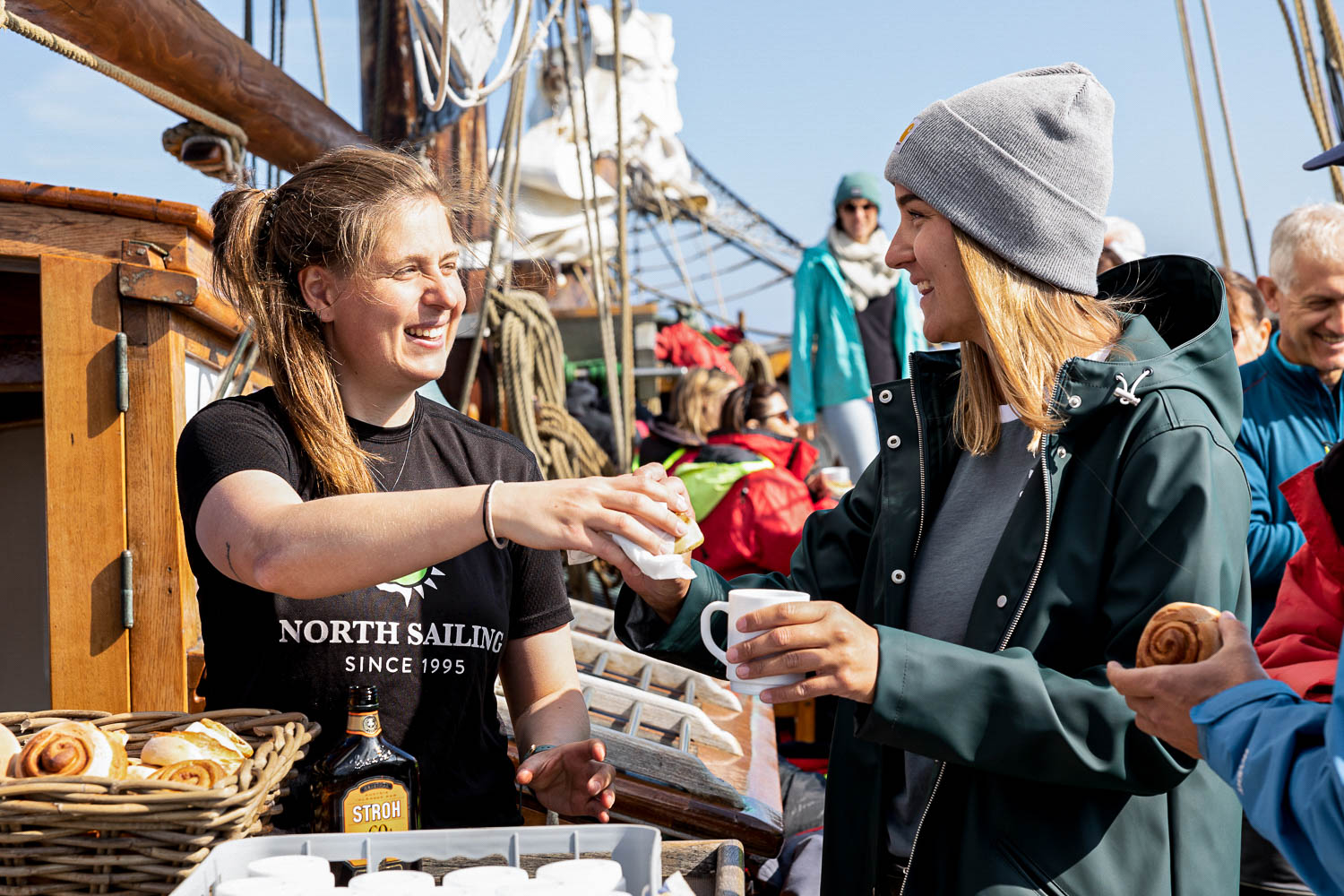
Usually, a whale watching tour takes approximately 3 hours to sail around Skjálfandi Bay in search of different whale species. We offer two special tours – Whales, Sails and Science and Húsavík Original Whale Watching and Puffins, lasting slightly longer to give enough time to fully enjoy the uniqueness of these tours.
We depart from Húsavík, and all our tours visit traditional whale watching areas inside the scenic Skjálfandi Bay. Every tour is unique, and the route will differ between the tours, all depending on the location of the whales and sea conditions.
Only one particular whale watching tour combines puffin watching and sailing around Lundey island – home of puffins.
Iceland enjoys a cool, temperate maritime climate with refreshing summers and mild winters thanks to the Gulf Stream. Yet, the weather in Iceland is constantly changing and can often be unpredictable. In Iceland, there’s our favourite saying: “If you don’t like the weather, wait 5 minutes”.
Your safety is our priority concern. Our captains and crew are experienced licenced sailors, many of whom have been local fishermen for years. We rely on their judgement, and the crew reserves the right to cancel the tour at short notice when the sea conditions are not favourable for a whale watching tour. In case of bad weather, we’ll contact you immediately, and you may be able to reschedule the whale watching tour, depending on your itinerary.
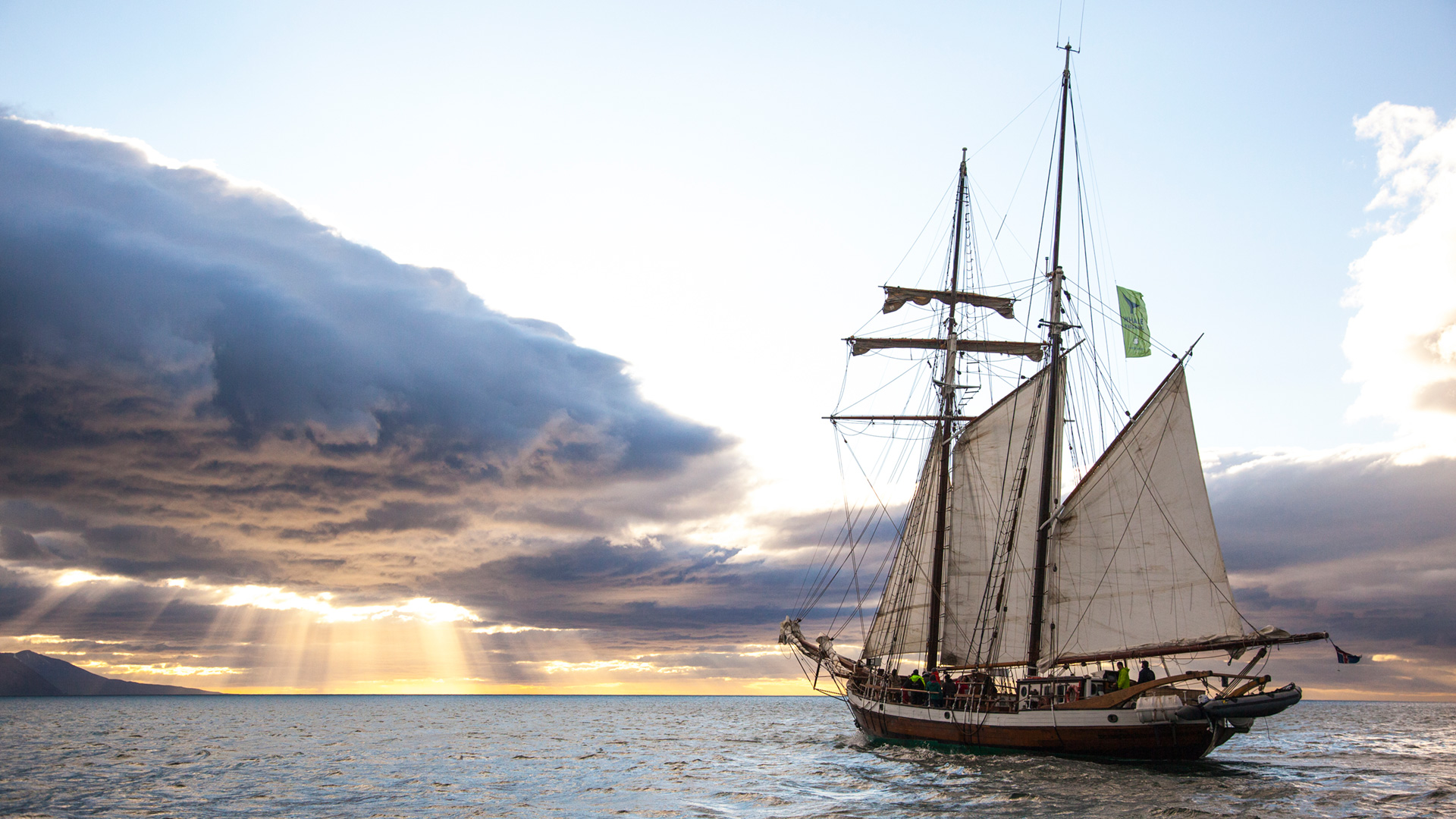
Our experienced crew members will give you the best tips for you to become good whales spotters. Usually, we are looking for a spout or a black back when the whale comes up to breathe. Birds can also be fantastic help as they tend to feed in the same location. A surprising fact is that whales can be heard from a long distance. Especially humpbacks and blue whales produce extremely loud noises when breathing! Stay quiet and listen to the first blow!
We don’t use a sonar system on our boats. While this may seem like a helpful tool for locating whales, the truth is that some sonar systems are harmful to whales. Marine mammals are very sensitive to hearing, and the sound coming from elsewhere can disrupt their behaviour.
Therefore, non-invasive visual observation is the most effective way to find whales together with our experience, help of birds, current lines and binoculars! We always appreciate the extra help of passengers to spot whales.
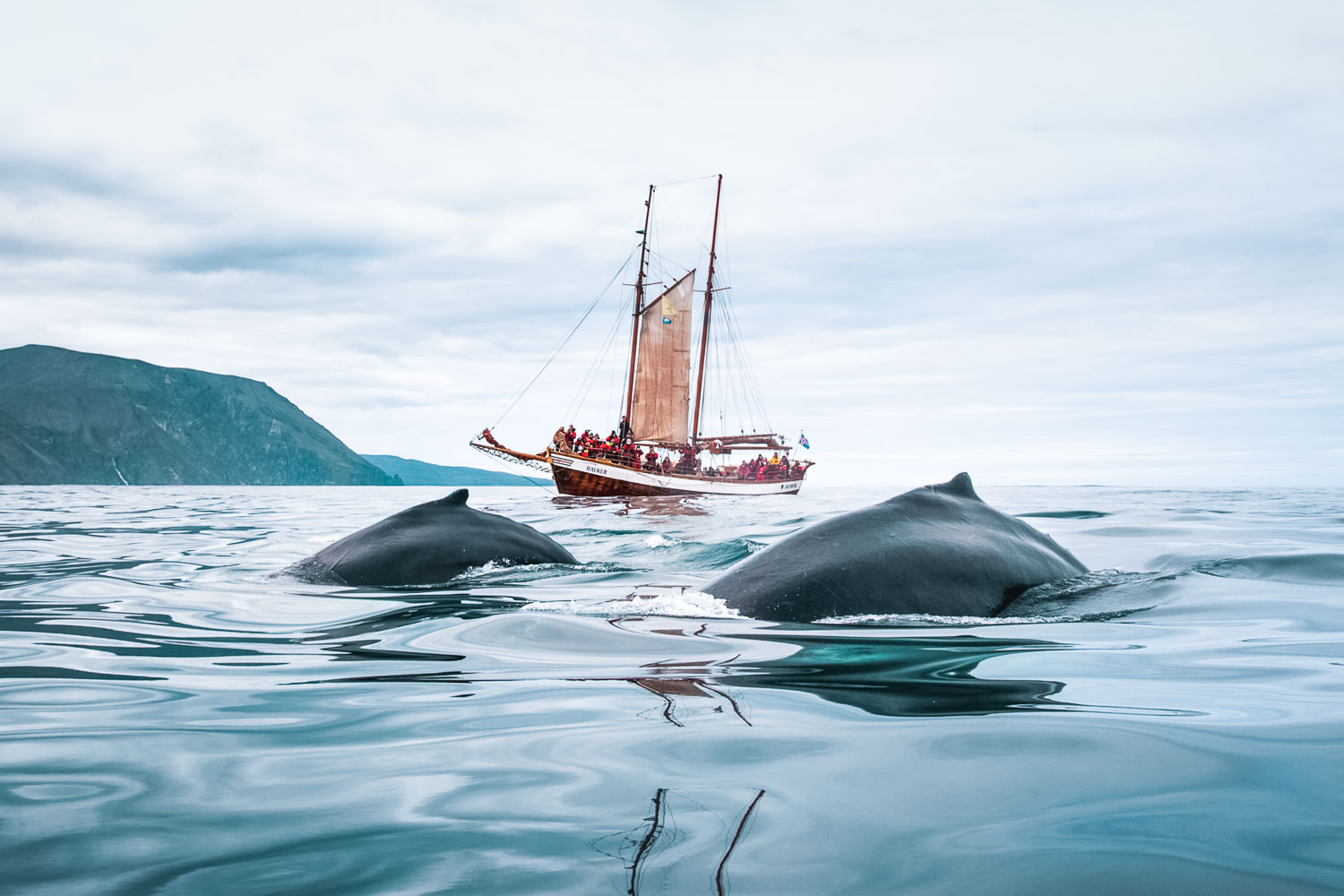
We use the so-called clock system on board to point out the position of the whale to make sure that everyone on board will spot the whale. Imagine that the boat is a giant clock: Meaning that 12 o’clock is in the front of the boat, and 6 o’clock is in the back. If you spot a whale before the crew does, don’t keep the secret for yourself and share it with others!
A spout above the water surface from the animal’s exhalation is usually the first sign that a large marine mammal is present. The excitement onboard is building up! After spotting a blow, we carefully manoeuvre the boat following a code of conduct and approach the wildlife in the Bay on their term to cause a minimum disturbance. Depending on the type of whale, we will be able to observe a few more spouts before the animal takes a dive.
Every species has its own spout characteristics, distinguishing in shapes – straight, round, V-shaped, slanted, bushy. The simple theorem is the bigger the spout, the bigger the whale. Once we get closer to these magnificent creatures, we might see the whale’s body with dorsal fin and pectoral fins. Now, identifying whale species is much easier and the crew will tell you all about the observed whale.
Every whale must resurface again to breathe after a deep dive. Typically, humpback whales take dives lasting approximately six minutes but they can resurface in any direction at any moment.
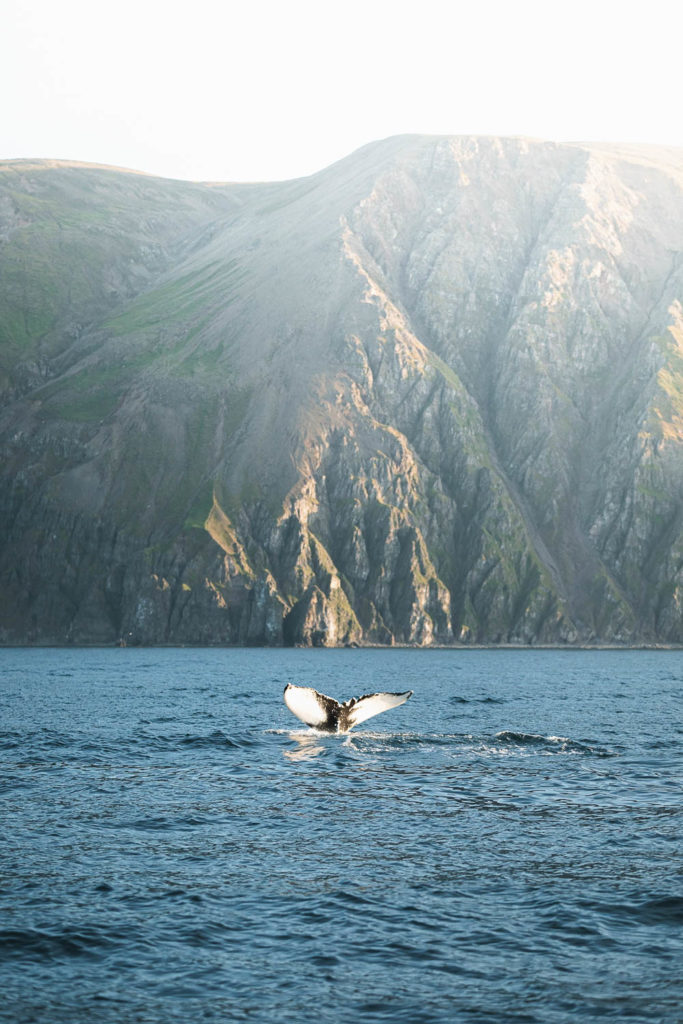
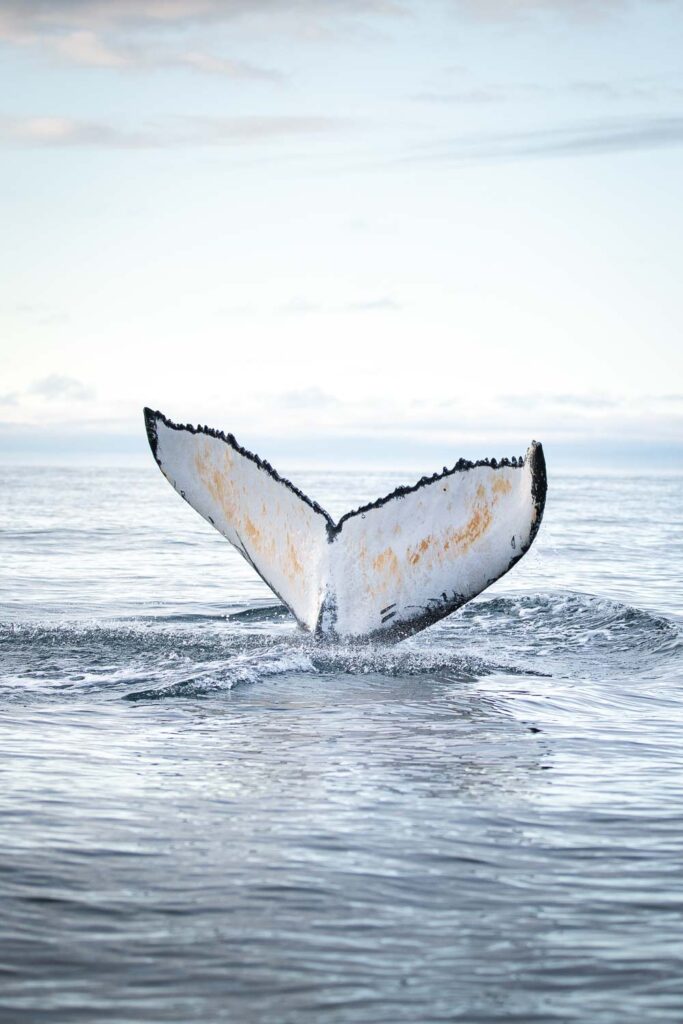
The tail’s shape and colour pattern are unique to each individual, like human fingerprints. Thanks to this finding, we can gather exciting information and learn more about these fantastic creatures – to identify, catalogue and monitor humpback whale migration, population size and behaviour patterns.
The University of Iceland’s Research Centre in Húsavik studies whales and marine life in good cooperation with North Sailing. If you see researchers working on board, don’t hesitate to ask them about their work to learn more.
Over the years, more than 1000 individuals of humpback whales have been spotted in Húsavík.
Now that you know what to wear, what to bring with you on board and how to spot whales it’s time to move on. In the last part of our guide, you can find out what whale watching tour to pick and how to make the most of your days in Húsavík. If you haven’t already, make sure to read the first part of our guide with useful information about whale watching in Húsavík, including when is the best time to go.